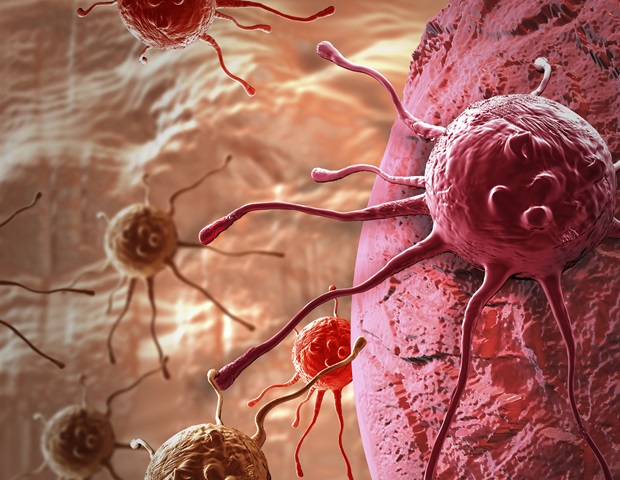
Modern advances in oncology have significantly improved cancer survival rates. However, personalized treatment methods are necessary, since tumors may behave differently for different patients.
At the AVS 66th International Symposium and Exhibition in Columbus, Ohio, Cristina Canal, a researcher in the biomaterials, biomechanics and tissue engineering research group at Universitat Politècnica de Catalunya, will present cold plasmas as a promising tool for minimally invasive cancer therapy.
In her talk, Canal will discuss the benefits of using plasma jets for cancer therapy, and explain the use of different liquid media, hydrogels and their properties.
Cancer cells are highly sensitive to oxidative stress, which is an excess of reactive oxygen-containing chemical species in the system. Exposure to oxidative stress can lead to the death of cancer cells.
By providing exogenous reactive oxygen and nitrogen species from plasma-activated medium to these cells, they exceed their toxicity threshold and undergo cell death."
Cristina Canal, researcher, Universitat Politècnica de Catalunya
The reactive species generated by plasma-activated liquids can be stored in hydrogels, which are materials used for various biomedical applications due to their biocompatibility. The hydrogels then deliver these to the tumor.
To understand how to achieve this efficiently, Canal and her team investigated the effects of different plasma jets used in combination with various hydrogels on osteosarcoma, a common type of bone tumor prevalent in children and teenagers.
"The mechanisms of action of cold plasmas and plasma-activated media seem to be common among these different cancers," Canal said. As a result, the researchers expect their methods might be work for other types of cancers as well.
AVS: Science and Technology of Materials, Interfaces, and Processing






No comments
Post a Comment